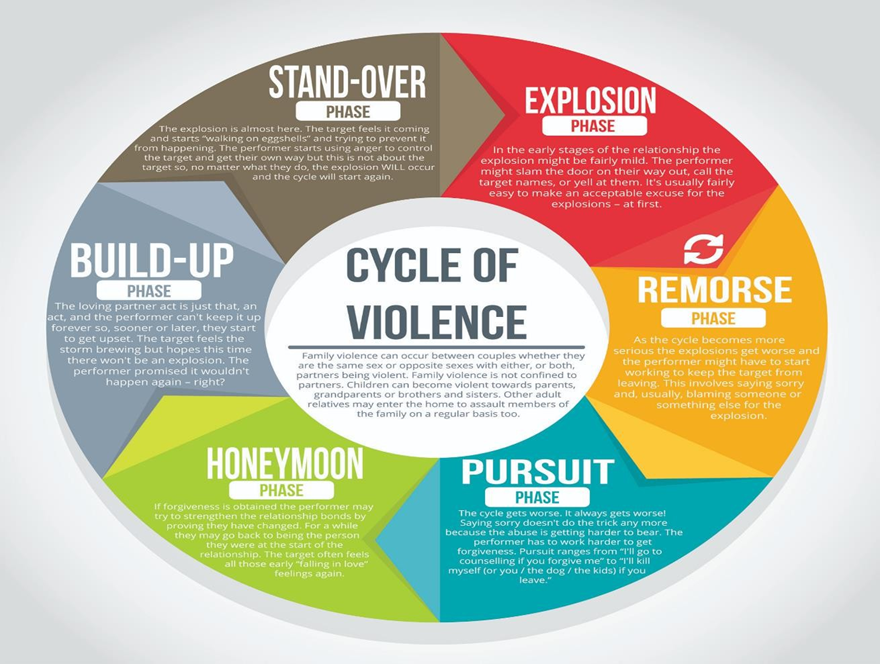A nurse is presenting an in-service about the cycle of violence to nursing staff. The nurse should include that which of the following occurs during phase 1 of the cycle of violence?
Arguments increase in frequency
Perpetrator causes physical harm
Perpetrator promises to change
Law enforcement officers are involved
The Correct Answer is A
A. Phase 1 of the cycle of violence, also known as the tension-building phase, is characterized by increasing tension and conflict between the parties involved in the abusive relationship. During this phase, arguments, disagreements, and conflicts escalate in frequency and intensity.

B Physical harm typically occurs during phase 2 of the cycle of violence, known as the acute or explosion phase.
C. This phase follows the acute phase and is characterized by the perpetrator expressing remorse, making excuses for their behavior, or attempting to reconcile with the victim through gestures of affection, gifts, or promises to change. However, these promises are often short- lived and may be followed by a return to tension-building behavior and the cycle of violence repeating.
D. Law enforcement involvement is not specific to phase 1 of the cycle, during which tensions are escalating and conflicts are increasing in frequency.
Nursing Test Bank
Naxlex Comprehensive Predictor Exams
Related Questions
Correct Answer is D
Explanation
D. Alcohol withdrawal is characterized by a range of symptoms that can vary in severity. Some common symptoms include increased heart rate (tachycardia), sweating, tremors, anxiety, nausea, vomiting, and agitation.
A. Alcohol withdrawal is more commonly associated with increased blood pressure rather than decreased blood pressure. Nausea can be a symptom of alcohol withdrawal, particularly in the early stages, but it is not necessarily a defining characteristic.
B. Constipation and pupil constriction are not typically associated with alcohol withdrawal. These symptoms are more commonly seen with opioid withdrawal.
C Bone and muscle aches are common symptoms of alcohol withdrawal. They can occur as a result of the body's reaction to the sudden cessation of alcohol intake and the associated changes in neurotransmitter levels.
Correct Answer is C
Explanation
C. This statement indicates an understanding of the needs of clients who are part of vulnerable populations because it demonstrates an awareness of the importance of client-centered care. Addressing the problem that the client believes is the most significant acknowledges the client's autonomy, respects their perspective, and ensures that their needs are prioritized.
A. This statement suggests a narrow focus on the immediate reason for the client's visit. While addressing the client's presenting concern is important, a limited assessment may overlook underlying issues or social determinants of health that could impact the client's well-being.
B. While privacy is important, asking clients for income or financial information may be necessary to assess their eligibility for financial assistance programs or to understand socioeconomic factors that may impact their health and access to care.
D. This statement suggests overlooking the importance of cultural competence in nursing practice. Cultural traditions, beliefs, and practices can significantly influence a client's health beliefs, behaviors, and preferences for care.
Whether you are a student looking to ace your exams or a practicing nurse seeking to enhance your expertise , our nursing education contents will empower you with the confidence and competence to make a difference in the lives of patients and become a respected leader in the healthcare field.
Visit Naxlex, invest in your future and unlock endless possibilities with our unparalleled nursing education contents today
Report Wrong Answer on the Current Question
Do you disagree with the answer? If yes, what is your expected answer? Explain.
Kindly be descriptive with the issue you are facing.
